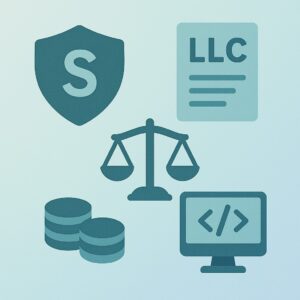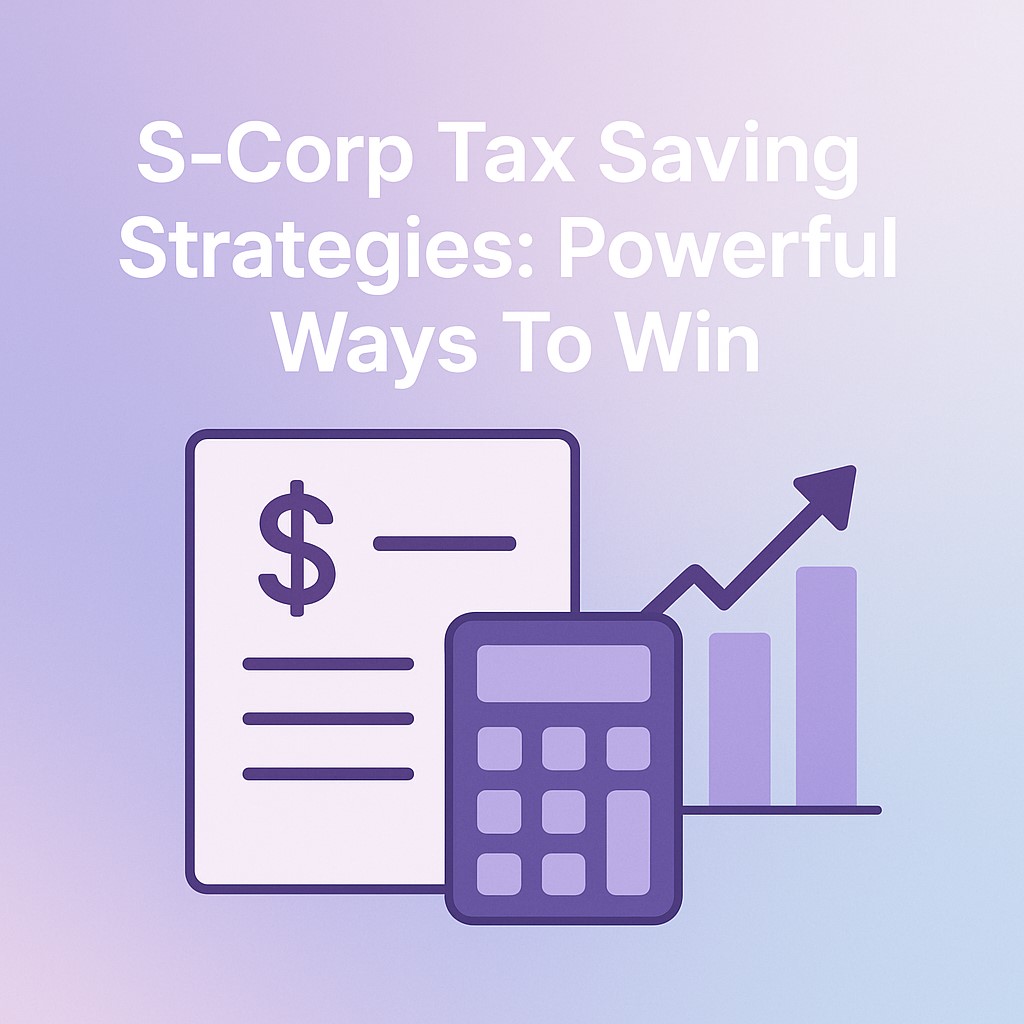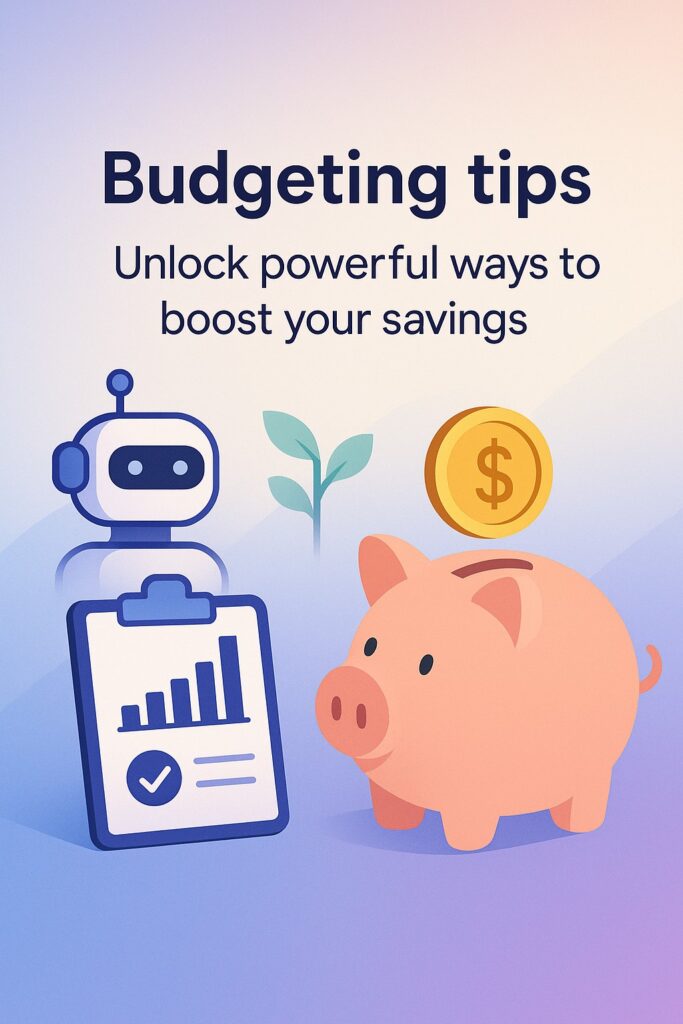Want to keep more of your freelance or business income? These smart S-Corp tax saving strategies can help you cut taxes without the stress.
Starting your own business or freelancing is exciting. But when tax season hits, things can get confusing—fast. That’s where S-Corp tax saving strategies come in. They help you keep more of your money by changing how your income is taxed.
So, what are they exactly? S-Corp tax saving strategies are methods that let you split your income into two parts: salary and distribution. You pay regular payroll taxes on your salary, but not on the distribution. That means less money going to the IRS and more staying in your pocket.
These strategies matter because they’re legal, smart, and used by thousands of young business owners, freelancers, and tech founders. If you’re earning a steady income and want to lower your tax bill, S-Corp tax saving strategies could be your best next move.
Let’s break it down and see how you can use these strategies to work less on taxes—and keep more of what you earn.
Table of contents
- How S-Corp tax saving strategies reduce self-employment tax?
- Best AI tools for S-Corp tax saving strategies in 2025
- Top S-Corp tax saving strategies for tech startups
- Best accounting software for S-Corp tax saving strategies
- S-Corp tax saving strategies vs LLC for software developers
- Salary vs distribution: smart S-Corp tax saving strategies
- AI-powered bookkeeping tips for S-Corp tax saving strategies
- SaaS founder’s guide to S-Corp tax saving strategies
- How tech founders use S-Corp tax saving strategies?
- S-Corp tax saving strategies for AI freelancers explained
- FAQs: S-Corp tax saving strategies
- Conclusion
How S-Corp tax saving strategies reduce self-employment tax?

Save smart and keep more of what you earn. If you’re running a small business or freelancing, you’ve probably noticed how self-employment taxes eat up a big chunk of your income. Here’s where S-Corp tax saving strategies can make a real difference. They help you legally lower the amount you owe in taxes—especially self-employment tax.
What is self-employment tax?
Self-employment tax includes Social Security and Medicare taxes. If you work for yourself, you pay both the employer and employee portions—around 15.3% of your net income. That adds up fast. But with an S-Corp, you don’t have to pay this tax on everything you earn.
How does an S-Corp change that?
Here’s the trick: when you form an S-Corp, the IRS sees you as both an owner and an employee. That means you can pay yourself a reasonable salary and take the rest as distributions. Only the salary is hit with self-employment tax. The distributions? Those skip the 15.3% tax altogether. This is one of the biggest reasons why people use S-Corp tax saving strategies today.
Real-world example for tech workers
Let’s say you’re a freelance app developer making $90,000 a year. As a sole proprietor, you’d pay self-employment tax on the whole $90,000. But with smart S-Corp tax saving strategies, you could pay yourself a $50,000 salary and take $40,000 as distributions. That $40K avoids the self-employment tax. You save over $6,000 in taxes—just by changing how you get paid.
You can’t just set any salary. The IRS requires that it be “reasonable” for your role and industry. So, don’t go too low. Use real data, or get advice from an accountant who understands S-Corp tax saving strategies.
In short, switching to an S-Corp can help you lower your tax bill—especially if you’re in the tech, creative, or freelance world. And that’s money you can reinvest, save, or use for something that actually matters to you.
Best AI tools for S-Corp tax saving strategies in 2025
Smarter tech = smarter tax savings. Managing taxes can be tough, especially when you’re juggling freelance gigs, tech projects, or your own startup. Luckily, 2025 is full of smart AI tools that make it easier to follow S-Corp tax saving strategies. These tools save you time, cut mistakes, and help you keep more of your earnings.
Keeper Tax: great for finding hidden deductions
Keeper Tax uses AI to scan your transactions and spot tax write-offs you might miss. It’s perfect if you’re a solo founder or freelancer using S-Corp tax saving strategies. The app even files your taxes and sends alerts about possible savings. It’s like having a tax assistant in your pocket.
QuickBooks with AI: perfect for busy founders
QuickBooks now includes smart AI that learns your spending patterns and helps sort expenses fast. It’s great for keeping payroll, salary, and distributions organized. If you’re applying S-Corp tax saving strategies, this tool helps make sure your income split is clean and easy to report.
FlyFin AI: built for self-employed tech pros
FlyFin is designed for people who want hands-off tax help. It tracks your business expenses with AI and connects you with real CPAs. If you’re using S-Corp tax saving strategies, it helps you stay on top of quarterly payments and find deductions without doing the math yourself.
These AI tools are changing how young business owners and tech freelancers handle taxes. They take the pressure off and make S-Corp tax saving strategies easier to manage—without needing to be a tax pro.
Top S-Corp tax saving strategies for tech startups

Pay less in taxes and invest more in your ideas. If you’re building a tech startup, you already have enough to focus on—code, launches, and scaling. But taxes? They shouldn’t eat up your budget. That’s where smart S-Corp tax saving strategies can help. These strategies are built for founders who want to grow without wasting money on unnecessary taxes.
Pay yourself a reasonable salary
One of the most effective S-Corp tax-saving strategies is splitting your income. As the founder, you pay yourself a salary that’s fair for your role. The rest of your profits? You take them as distributions, which aren’t hit with self-employment tax. This combo saves serious cash while keeping you compliant.
Track every expense with AI tools
Using AI-powered tools like QuickBooks or FlyFin makes tracking startup expenses simple. From software subscriptions to team lunches, every dollar counts. Good tracking helps you apply S-Corp tax saving strategies more effectively, especially when it’s time to file or meet with your CPA.
Max out business deductions
Tech startups often miss out on deductions for gear, hosting, or even marketing tools. Make a list early and keep receipts. This step, paired with other S-Corp tax saving strategies, helps you lower your total taxable income and frees up money to reinvest in your product.
In short, the right strategy lets you save more and stress less. With smart planning, your startup can use S-Corp tax saving strategies to stay lean and focused on building something big.
Best accounting software for S-Corp tax saving strategies
Stay organized and save more with the right tools. If you’re running an S-Corp, your books need to be clean. Messy numbers can lead to overpaying taxes—or worse, IRS trouble. That’s why using the best accounting software is key to making S-Corp tax saving strategies work for you. These tools keep your income, expenses, and payroll in check without all the stress.
QuickBooks Online: trusted and beginner-friendly
QuickBooks is popular for a reason. It’s easy to use and perfect for young founders or solo tech freelancers. It helps you separate salary from distributions—something every S-Corp needs. You can track expenses, automate invoices, and connect your bank. With QuickBooks, applying S-Corp tax saving strategies feels less overwhelming.
Xero: clean design with powerful features S-Corp tax saving strategies
Xero is simple, modern, and packed with features. It’s great if you’re just starting out and want your finances to stay neat. Xero also lets you run payroll, manage bills, and handle taxes with ease. For anyone using S-Corp tax saving strategies, Xero keeps everything visible and up to date.
Zoho Books: budget-friendly for small teams
Zoho Books is perfect for small teams who need solid features but want to save money. It helps track project costs, automate reports, and manage your business income smoothly. If you’re testing out S-Corp tax saving strategies, Zoho Books gives you the control without the high cost.
These accounting tools help you stay ahead, stay legal, and stay focused. With good software and smart S-Corp tax saving strategies, managing your startup’s money doesn’t have to feel impossible.
S-Corp tax saving strategies vs LLC for software developers

Which setup saves you more in taxes? If you’re a freelance software developer or starting your own coding business, choosing the right structure matters. Most people start with an LLC. It’s easy, flexible, and simple to manage. But if you’re making good money, switching to S-Corp tax saving strategies can save you thousands each year.
LLC: simple but higher self-employment taxes
An LLC is a good starting point. You pay taxes on all your profits through your personal return. But here’s the catch—you also pay self-employment tax (around 15.3%) on the full amount. So, if you make $90K writing code, you pay that extra tax on the whole $90K. No breaks.
S-Corp: pay yourself and keep more
With S-Corp tax saving strategies, you split your income. You pay yourself a “reasonable salary” and take the rest as distributions. Only the salary is taxed for Social Security and Medicare. That means you keep more of what you earn. This is why many developers shift from LLC to S-Corp once income grows.
Which one is better for devs?If you’re making over $60K from coding gigs, S-Corp tax-saving strategies might be the smarter move. You’ll need to do a bit more paperwork and run payroll, but the savings are worth it. Plus, with the right software, managing an S-Corp isn’t that hard.
So, while LLCs are great for starting out, S-Corps give software developers a serious tax edge. Use smart S-Corp tax saving strategies, and you’ll keep more of your money—money you can use to upgrade your gear or launch your next app.
Salary vs distribution: smart S-Corp tax saving strategies
Pay yourself right and save more in taxes. If you’re running an S-Corp, how you pay yourself can change your entire tax game. One of the best S-Corp tax saving strategies is understanding the difference between salary and distribution—and using both in the smartest way.
What’s the difference?
A salary is what you get paid as an employee of your S-Corp. It’s taxed like regular income, with Social Security and Medicare taken out. A distribution is a payment from your business profits. The cool part? Distributions aren’t hit with self-employment tax. That’s where the savings come in.
Why split your income?
Let’s say you earn $80,000. With S-Corp tax saving strategies, you could take $45,000 as a salary and $35,000 as a distribution. You pay payroll taxes only on the $45K. The other $35K avoids that extra tax, saving you money. It’s legal, smart, and used by many young entrepreneurs.
Be careful with the numbers
The IRS wants your salary to be “reasonable.” That means you can’t just give yourself a tiny paycheck and call the rest a distribution. Use data from your industry to set a fair salary. This keeps your S-Corp tax saving strategies safe and audit-proof.
So, if you’re serious about keeping more of your earnings, learning the balance between salary and distribution is key. With the right S-Corp tax saving strategies, you stay legal and still save a lot.
AI-powered bookkeeping tips for S-Corp tax saving strategies

Let smart tools do the heavy lifting. Bookkeeping might sound boring, but it’s a big deal when it comes to saving money on taxes. If you’re using S-Corp tax saving strategies, keeping your books clean is a must. The good news? AI-powered tools make it super easy—even if you’ve never touched a spreadsheet.
Use AI to separate salary and distributions
One of the most helpful S-Corp tax saving strategies is splitting your income between salary and distributions. Tools like QuickBooks or Bench use AI to sort these automatically. This way, you don’t mix things up or pay more tax than you need to. Everything stays in the right place.
Automate your expense tracking
You can’t save what you don’t track. AI bookkeeping tools connect to your bank and label every transaction—subscriptions, office gear, meals, you name it. This helps apply S-Corp tax saving strategies by making sure you catch every business expense that can lower your taxable income.
Stay organized all year, not just at tax time
AI tools don’t just help during tax season. They give you real-time updates, easy reports, and alerts if anything looks off. That means your S-Corp tax saving strategies stay on track month after month—without needing to dig through receipts at the last minute.
In short, AI-powered bookkeeping turns a boring chore into a smart move. With just a few clicks, you save time, avoid mistakes, and make your S-Corp tax saving strategies work better than ever.
SaaS founder’s guide to S-Corp tax saving strategies
Build your product and save on taxes too. If you’ve launched a SaaS startup, taxes might not be your favorite thing to deal with. But using the right S-Corp tax saving strategies can make a big difference in how much money you actually keep. And the earlier you start, the better it works for your growth.
Set a fair salary and save the rest
As a founder, you probably wear multiple hats—developer, marketer, support lead. But once you choose S-Corp status, you need to pay yourself a reasonable salary. The rest of your profits? You can take those as distributions. This method is one of the most common S-Corp tax saving strategies because distributions skip self-employment tax.
Use AI tools to track recurring SaaS expenses
Most SaaS startups spend on hosting, tools, and subscriptions. Use AI-powered bookkeeping apps to track every payment. This makes it easier to manage write-offs and stick to your S-Corp tax saving strategies. It also helps when filing quarterly taxes or sending reports to investors.
Plan your salary around growth
In early stages, it’s okay to take a smaller salary. But as revenue increases, the IRS expects you to adjust it. Keeping your pay in line with what other SaaS founders make protects your S-Corp tax saving strategies and avoids unwanted audits.
With just a few smart moves, you can run your SaaS business more efficiently and save a lot on taxes. These S-Corp tax saving strategies aren’t just for big companies—they’re perfect for solo founders and small teams trying to scale.
How tech founders use S-Corp tax saving strategies?

Real ways to cut taxes while building your startup. If you’re a tech founder, saving money matters—especially in the early days. One of the smartest moves many young founders make is using S-Corp tax saving strategies. These help reduce how much you pay in taxes and give you more money to reinvest into your product, team, or growth.
Pay less in self-employment taxes
Instead of paying tax on all your business profits, S-Corp founders split their income. They take a fair salary and pull the rest as distributions. This setup is at the core of S-Corp tax saving strategies. It means you only pay payroll taxes on your salary, not your full income. That’s a big deal when every dollar counts.
Use tech tools to stay lean and organized
Most tech founders rely on tools like QuickBooks, FlyFin, or Xero to keep their finances clean. These tools automate payroll, sort transactions, and even help with filing. When used right, they make S-Corp tax saving strategies easy to follow—even if you’re not a numbers person.
Stay tax-ready from day one
Founders who plan early avoid surprises. They know how much to set aside, when to pay estimated taxes, and how to record salaries. These habits support their S-Corp tax saving strategies and keep things smooth when it’s time to meet investors or file returns.
Smart tech founders don’t just build cool apps—they build smart money habits too. And S-Corp tax saving strategies are one of the best ways to keep more of what they earn.
S-Corp tax saving strategies for AI freelancers explained
Keep more of your freelance income with smart planning. If you’re freelancing in the AI world—doing prompt engineering, model training, or building automation tools—you’re probably earning good money. But taxes can take a big bite out of it. That’s why many solo pros now use S-Corp tax saving strategies to hold on to more of what they earn.
Split your income to lower taxes
As an AI freelancer, you can set up your business as an S-Corp. Then, you pay yourself a salary and take the rest of your income as distributions. The salary is taxed like normal income, but the distributions aren’t hit with self-employment tax. This is one of the best-known S-Corp tax saving —it lowers your tax bill without changing how you work.
Use AI tools to manage everything
AI freelancers love tech, so why not use it for your finances too? Tools like Keeper Tax and QuickBooks use AI to track income, organize expenses, and even calculate taxes. These tools make it easier to apply S-Corp tax saving strategies without spending hours doing math or paperwork.
Stay on top of your records
Freelancers often get paid in different ways—PayPal, Stripe, direct bank deposits. It’s important to log every payment and every business expense. Good records help your S-Corp tax saving work better and keep you ready for tax season. A few minutes each week can save you big money later.
So, if you’re an AI freelancer aiming to boost your income and reduce tax stress, setting up an
FAQs: S-Corp tax saving strategies
What are S-Corp tax saving strategies?
S-Corp tax saving strategies help you pay less in taxes by changing how your business income is taxed. As an S-Corp owner, you split your income into salary and distributions. You only pay payroll taxes on the salary part, not the full income. This setup can save you thousands each year.
Can students or freelancers use S-Corp tax saving strategies?
Yes, if you’re making good money as a freelancer or business owner, you can use these strategies. Many students doing coding, design, or AI gigs form S-Corps to lower their tax bills. You just need steady income and a bit of planning to make it work.
How much can I actually save?
It depends on how much you earn. If you make around $70K or more, S-Corp tax saving strategies could save you $5K to $10K per year. The more you earn, the more you save. These savings come mostly from avoiding self-employment tax on your distributions.
Do I need to hire a CPA for this?
It’s smart to have a CPA when using S-Corp tax saving strategies. They help set a fair salary, handle payroll, and keep you compliant with IRS rules. But some people also use AI-powered tax tools to do most of the work for less money.
Can I use S-Corp tax saving strategies if I just started my business?
Yes, but you need to have some income. If your business is brand new and not making money yet, it’s better to wait. Once you start earning regularly, S-Corp tax saving strategies become more helpful and easier to manage.
Is it hard to manage an S-Corp?
It takes a little more effort than a regular LLC, but it’s not hard. You’ll need to run payroll, keep records, and file a few extra forms. With good software and planning, you can handle S-Corp tax saving strategies without getting overwhelmed.
Conclusion
S-Corp tax saving strategies help you keep more of your income. They work by changing how your business earnings are taxed. If you’re freelancing or running a small business, this can make a big difference.
With the right setup, tools, and planning, S-Corp tax saving strategies are easy to follow. You don’t need to be a finance expert. You just need to stay organized and know how to split your income smartly.
Many students and young founders already use S-Corp tax saving strategies to reduce their tax bills. It’s one of the best ways to grow your business without giving extra money to the IRS.
Saving money today means having more freedom tomorrow.



